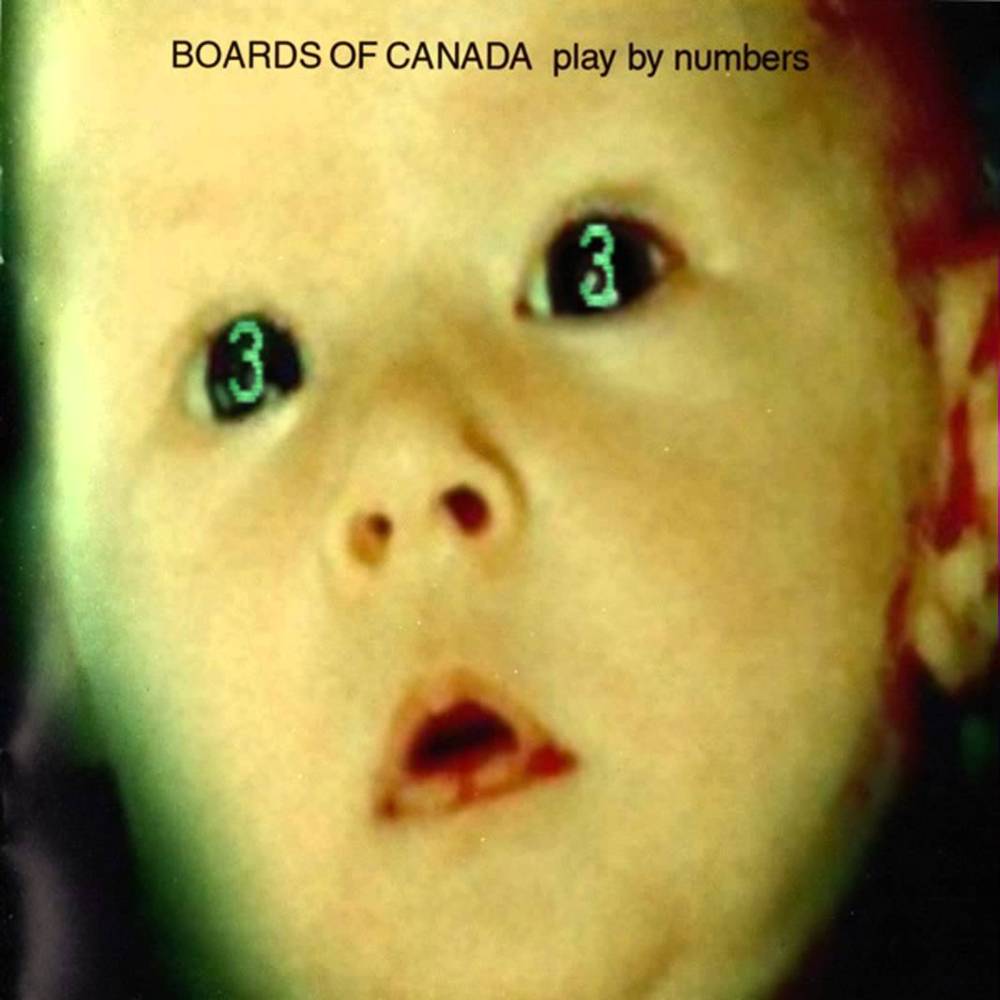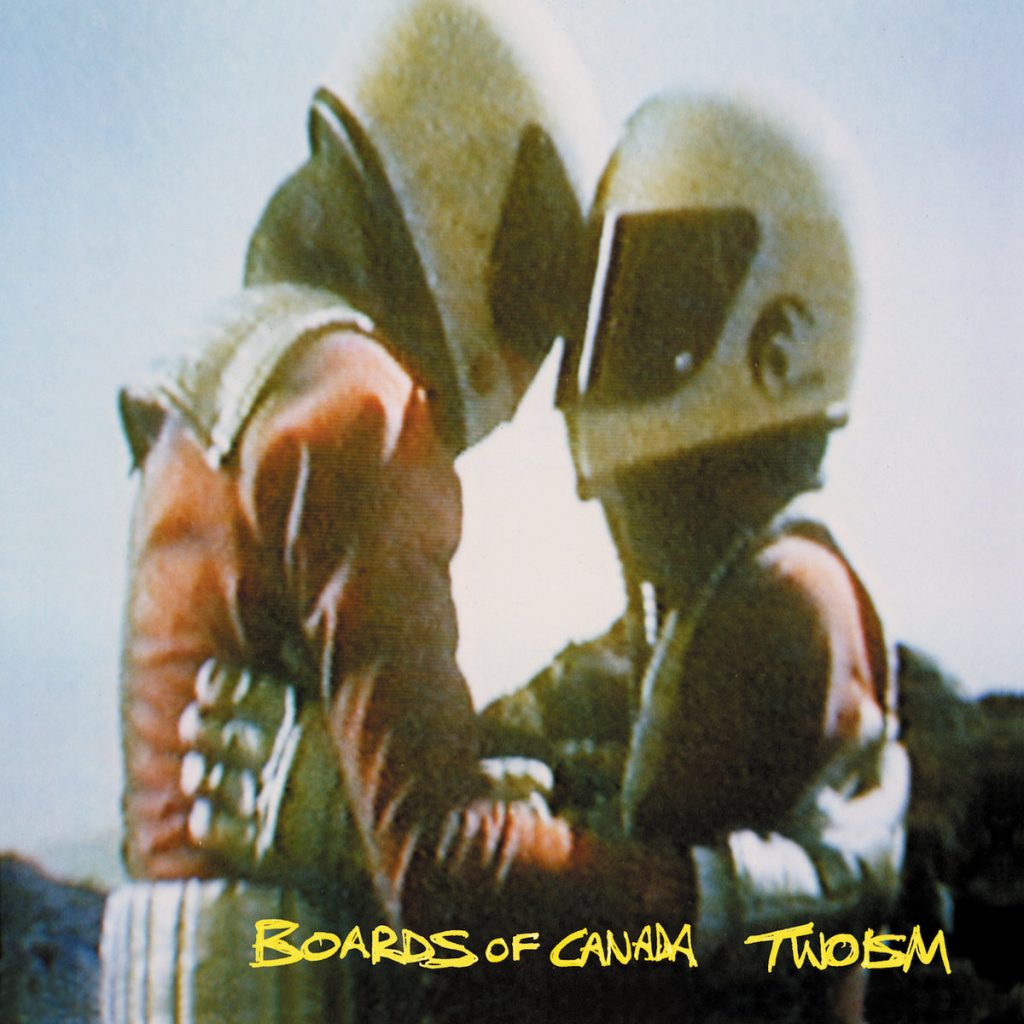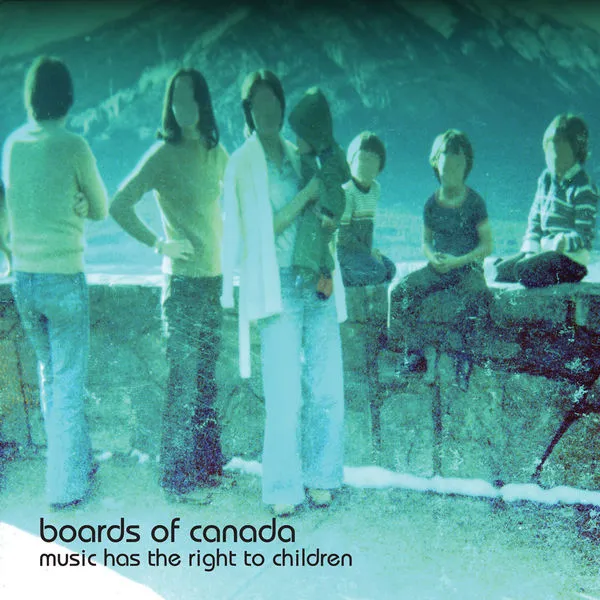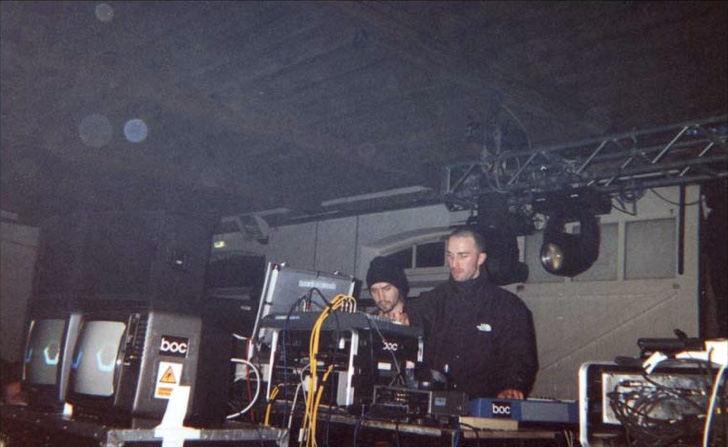This year, we will see two milestones achieved for probably my favourite musical act of all time: Boards of Canada. A very influential act in electronic music since the 90s, Boards of Canada has maintained a perfect album discography on Warp Records throughout the years, starting from their debut album on the label “Music Has The Right To Children” until their latest album “Tomorrow’s Harvest”, which will celebrate their 25th and 10th anniversaries respectively in 2023.
I will have two articles dedicated to Boards of Canada: the first one, which is the one you’re currently reading, will take a look at the duo’s early career before signing to Warp Records followed by taking a look at their debut album in Warp, “Music Has The Right To Children”, which celebrates its 25th anniversary today, in April 20, along with its influence on my music under the Sunset Phase project. The second article will continue from where I will leave off in this article, taking a look at their career post-debut, up until “Tomorrow’s Harvest”, and will be released in its 10th anniversary in June 10.
Boards of Canada was formed by brothers Michael Sandison and Marcus Eoin, along with Christopher Horne (who was a part of the act until 1995), in Edinburgh, Scotland around the late 1980s. The name of the duo comes from the National Film Board of Canada, a government agency which produced award winning films that the brothers were watching during their childhood in Canada. Not much information is available on their releases prior to their first official release “Twoism”, but their existence have been confirmed after many years via several sources close to them. The most notable releases among their very early material are “Catalog 3”, “Play By Numbers” and “Random 35 Tracks Tape” (the official name of this release is still unknown).

Catalog 3 is their first known release which was recorded around mid-to-late 1980s. We don’t have much official information on how Play By Numbers sound like as a whole, but (allegedly) short snippets of several tracks from it have been leaked throughout the years. “Wouldn’t You Like To Be Free”, one of the partially leaked tracks from this album, can be considered as a shoegaze attempt heavily influenced by My Bloody Valentine, one of the biggest shoegaze bands of all time, which is also mentioned in a Jockey Slut article written by Richard Southern at that time (Southern, 2000). Random 35 Tracks Tape, leaked in 2004, keeps the shoegaze influences in general but combines it with downtempo elements and lush synths, which will strike the listener very frequently throughout their official discography since it constitutes a huge part of the duo’s signature sound and vibe.
After these early releases mentioned above along with presumably a bunch of other early material that were unable to be heard by the public, the duo finally releases their first semi-official release: “Twoism”. Released originally via the brothers’ own record label Music70 in 1995, it was only limited to roughly 100 physical copies until the brothers got signed to Skam Records, an electronic record label based in Manchester, after grabbing the attention of the highly acclaimed electronic duo Autechre shortly after the initial release and reissued the album in 2002.

The album starts with one of my favourite tracks ever from the duo: “Sixtyniner”. Starting with a melancholic pad that continues throughout the whole track and is accompanied by these crisp sounding hip hop drums that also surrounds your ears, it makes you feel both depressive emotions and nostalgia at the same time, with a hint of hope for everything being okay one day in the future, and this overall feeling is prominent in most of the duo’s subsequent tracks, both in Twoism and in the following releases. The second track “Oirectine” continues with a similar sound and feel, while also adding some experimental electronic noises and filters throughout the track, which is probably one of the initial contributors to the duo’s music being labeled as IDM, a musical movement pioneered by Warp Records artists in the 90s that emphasises on experimentation in existing electronic genres such as techno and jungle, and we can hear that Boards of Canada is doing this experimentation with downtempo music. This type of experimentation continues in the following two tracks: “Iced Cooly” and “Basefree”, with the former having a unusual sounding synth bassline accompanied by an atmospheric synth lead, and the latter having a pretty experimental groove with the highly processed drums.
Moving onto the second half of the album, we stumble upon the title track “Twoism”, which is probably the closest sounding track to Music Has The Right To Children between all the tracks in the entire album. In addition to this statement, the ending synths in Twoism are also featured at the ending of the track “Sixtyten” from MHTRTC, which is a pretty cool throwback in my opinion. The last 3 tracks, “Seeya Later”, “Melissa Juice” and “Smokes Quantity / 1986 Summer Fire”, follow similar compositional elements and feelings to previous tracks, with the additions of “Melissa Juice” acting like a short intermission in the album with the repeating synth sequence and filtered drums and the last track being a combination of 2 tracks, with the second, 1986 Summer Fire, being a beautiful ambient finale to the album that sounds pretty much like its name: a memory from your last night at a summer camp, surrounding a campfire with your friends and saying farewell to your environment and your experience.
This album is kind of overlooked by many, probably because of it not being considered among the main releases of the duo, but I think this album is as important as their major releases because it provides a blueprint to them with the use of atmospheric, lush and usually melancholic synths and experimentations with grooves and textures that create their signature atmosphere in their major releases, which Music Has The Right To Children, the next album I will talk about, is a part of.
Shortly after the duo’s signing to Skam Records around 1996, we see the release of “Hi Scores” EP, which includes one of the well known tracks of the duo: “Everything You Do Is A Balloon”. Named after a personal experience and later realisation by the duo (The Cosmic Crofter, 1998), the track starts with a nostalgic but hopeful synth melody similar to “1986 Summer Fire” from Twoism, followed by sad synth sounds and the typical downtempo groove, making it sound like an immediate change in emotions from being optimistic to being pessimistic. The EP also includes the track “Turquoise Hexagon Sun”, which is also featured in Music Has The Right To Children. Between Twoism and MHTRTC, we also see 2 more releases, “Boc Maxima” and “A Few Old Tunes”, where the former, released around 1995, consists of unreleased tracks and tracks which were also featured in MHTRTC, and the latter, released in 1996 as a cassette, consists of hand-selected unreleased tracks produced before Boc Maxima.
At the same time, Boards of Canada were also in contact with Warp Records, and in 1998, we see the release of their most popular and influential work to date: the highly acclaimed Music Has The Right To Children, released jointly by Warp and Skam.

The album starts with the track “Wildlife Analysis”: a short track that features their signature lush pads similar to the ones we hear in “Twoism” accompanied by a chill synth lead that kind of sounds like a flute, and the overall vibe of the track is like an analog electronic representation of nature. This chill start is continued with “An Eagle In Your Mind”, a calming Boards of Canada track which again features the similar lush melodies of Twoism, along with a rhythm that is created by percussive sounds sampled from Michael’s girlfriend’s voice (Remix Magazine, 2002), which can be considered a slight introduction to the use of experimental sounds throughout the album.
Now things start to get interesting with the third track “The Color of the Fire”, a short interlude that features a child’s voice that is slowed down on top of eerie sounding synths, giving it a psychedelic memory feel, which is actually the case here since the duo mentioned in an interview that the track’s name was a reference to a psychedelic experience of one of their friends (Passet, 1998). Following this interlude, we stumble upon the track “Telephasic Workshop”, with a rhythm that reminds the listener of the electro rhythms used by Autechre along with short vocal chops that progressively gets crowded throughout the track. A comment made by the user “beepst” on one of the videos for this track on YouTube explains my feelings about the track pretty nicely: “being a kid and observing all of the people, colors, objects, nature around me, and listening to people talking, cars and industrial sounds, without really understanding anything but feeling equally fascinated by the feeling of detachment that the ignorance and innocence of being a child provided” (Goncalves, 2007). This is then followed by another interlude named “Triangles & Rhombuses”, which sounds like a loading screen for the next chapter of the journey.
After this interlude, we arrive to one of the highlights in the album: “Sixtyten”, which I also mentioned before when I was talking about the track “Twoism”. Sampling two songs by the infamous band “Earth, Wind and Fire” as well as the infamous children’s television series Sesame Street (Bocpages, 2022b), it is probably the most “vibey” track in the album with a hard hitting hip hop rhythm accompanied again by the duo’s signature synth sounds. Now I would like to emphasise on the Sesame Street sampling part, because you can hear samplings from various children’s television series, most notably Sesame Street, throughout the album which is an essential part of the nostalgic feel that Boards of Canada gives with their music. This album makes you think about your happy childhood memories overall, and this track is one of the contributors to this overall feeling. Later, we move to another track that I mentioned before when I was talking about the “Hi Scores” EP, “Turquoise Hexagon Sun”. Similar high synths that were featured in Twoism’s “Sixtyniner” appear again in the melody, with a drum groove that sits between the grooves of “An Eagle In Your Mind” and “Telephasic Workshop” in terms of complexity.
Reaching to the middle of the album, we encounter 3 tracks back to back: “Kaini Industries”, “Bocuma” and “Roygbiv”. The first one is another interlude in the album, with a synth melody that reminds me of the ending of the tracks “Twoism” and “Sixtyten”, and it also prepares us for the upcoming two tracks. I would like to think of Bocuma and Roygbiv together because the transition between them is so fluid that listening to them back to back feels like listening to a single track. After Bocuma’s synth melody, we are welcomed by the warm analog bassline of Roygbiv, followed by its simple but mesmerizing drum groove and melody, accompanied again by child voice samples from Sesame Street (Bocpages, 2022b). Roygbiv is one of my favourite tracks of all time, with its analog warmth and nostalgic magic that always make me really happy when I listen to it.

Following Roygbiv, we are welcomed by the track “Rue The Whirl”, which has a drum loop similar to the track “Twoism” along with a rising synth looped over and over again mostly throughout the track. Despite it being repetitive, I find it quite introspective, it makes you question yourself and your surroundings while being hit again with the analog warmth and nostalgic magic. This exact introspective feeling is continued in the following track “Aquarius”, which again features samples from Sesame Street (Bocpages, 2022a) and which also reminds me of Triangles & Rhombuses in the first half with both having a similar groove and feel of both loading music and elevator music at the same time. The second half has a robotic voice of a woman counting from 1 to 36 and then counting randomly, which is interesting because the sum of numbers from 1 to 36 is 666, which is something I will elaborate on in the second part of this article when I talk about their second album “Geogaddi”.
Reaching towards the end of the album, we arrive at another highlight: “Olson”. Short but effective, Olson is the climax of hope for the future after our nostalgic journey with prior tracks. With a huge atmospheric analog synth sound surrounding the ears of the listener for a minute and ending with a simple but beautiful piano chord progression, Olson leaves a huge mark on the listener. Following Olson, we have “Pete Standing Alone” and “Smokes Quantity” from Twoism, two nice Boards of Canada tracks that extends our nostalgic, magical journey with elements from previous tracks, leading to an ambient path with “Open The Light”, which sounds like a theme of awakening for the listener after reaching hopeful thoughts at the end of our journey.
Last but not least, this conclusion gets another boost from the final track “One Very Important Thought”, featuring a woman’s monologue about defending constitutional rights against censorship. The monologue can be interpreted in many different ways, but within the context of the album, I want to interpret it again in the way of being hopeful after our awakening with the previous track and our hope aiding us for our upcoming mindful actions to develop ourselves a better future. I love the moment around the 56 second mark where a change happens in the background chords, sort of like an emphasis on the message. I also would like to mention that the re-releases of this album have a bonus end track named “Happy Cycling”, an eerie but uplifting track by the duo again with the signature elements of Music Has The Right To Children, though I still consider One Very Important Thought as the true ending to the album.
So, what makes this album so important in electronic music history and me? First of all, the magnificent execution of multiple emotions ranging from feeling happy to feeling confused makes this album a very interesting listen from start to finish. It makes you travel back to your happy moments in your past, your childhood, and even if you cannot have a throwback to your own childhood memories or you cannot resonate with the childhood era of the duo, it creates those memories for you to not fall short of the nostalgic experience, like a “false nostalgia” with the album’s psychedelic nature. “Music Has The Right To Children” is one of the earliest and perfectly executed musical examples of emphasising nostalgia with sound, which influenced many artists such as Tycho and Com Truise (who are also among my musical influences) who deal with similar concepts in their music, and also my music as Sunset Phase as well. My first album “A Forgotten Tape” was heavily influenced by this album with its analog warmth and compositions influenced by Boards of Canada’s music such as “In Low Spirits” (especially “Roygbiv”) with its nostalgic downtempo composition and “Forgotten Sequencer” with its synth sequence at the end resembling the sequences we hear in “Kaini Industries” and “Bocuma”, and the whole nostalgic effect of the album is prominent in all my tracks. I can safely say that Boards of Canada, and especially Music Has The Right To Children, is one of the key influences of Sunset Phase and its influence exists and will exist in one way or another in nearly all my music under this project. See you again at the second part of this article on June 10.
Bibliography:
Bocpages (2022a) Aquarius (song), bocpages. Available at: https://bocpages.org/wiki/Aquarius_(song) (Accessed: April 19, 2023).
Bocpages (2022b) Roygbiv, bocpages. Available at: https://bocpages.org/wiki/Roygbiv (Accessed: April 19, 2023).
Bocpages (2022c) Sixtyten, bocpages. Available at: https://bocpages.org/wiki/Sixtyten (Accessed: April 19, 2023).
Goncalves, J.A.D.S. (2007) Boards of Canada – Telephasic Workshop, YouTube. YouTube. Available at: https://www.youtube.com/watch?v=he8fMUmxHOU (Accessed: April 19, 2023).
Passet, R. (1998) A bunker full of memories, bocpages. Available at: https://bocpages.org/wiki/A_Bunker_Full_of_Memories (Accessed: April 19, 2023).
Remix Magazine (2002) Magical, mystery, cycling, bocpages. Available at: https://bocpages.org/wiki/Magical,_Mystery,_Cycling (Accessed: April 19, 2023).
Southern, R. (2000) Boards of the Underground, bocpages. Available at: https://bocpages.org/wiki/Boards_of_The_Underground#Original_Text (Accessed: April 18, 2023).
The Cosmic Crofter (1998) The Age of Aquarius, bocpages. Available at: https://bocpages.org/wiki/The_Age_of_Aquarius (Accessed: April 18, 2023).
